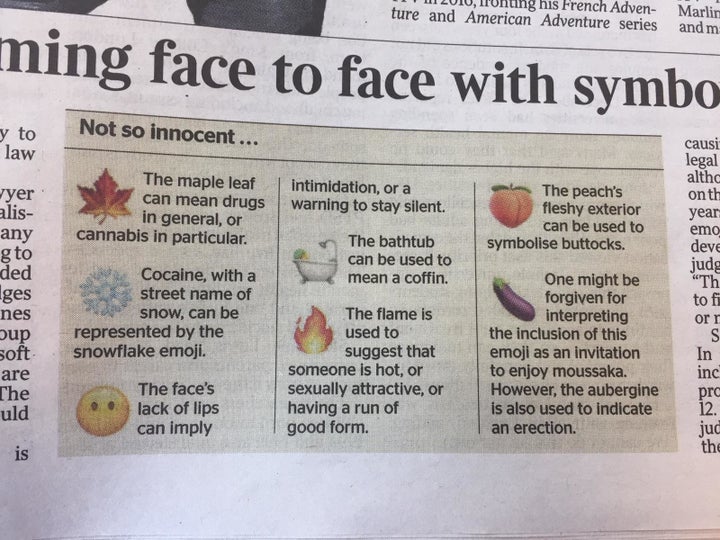
It’s definitely 2019 when a headline on The Times’ front page starts with “Facepalm” (🤦♀️).
The story in question, in Friday’s edition, concerns lawyers urging judges to learn “the sexual and sometimes sinister” meaning of emojis 👀.
These “small digital images” are already common in US cases and becoming more frequent in evidence used in criminal cases in the UK, reports The Times.
A typical High Court judge might see an aubergine 🍆 or maple leaf 🍁 emoji as “fairly innocuous”, it goes on. So Felicity Gerry, QC is calling for a “legal emoji primer” to help the judiciary... get with the times.
But the part of the piece that is delighting a lot of people (including us and Twitter) is the emoji explainer titled: “Not so innocent...”
“The Times needs an emoji explainer for their emoji explainer,” Steve Williams pointed out on Twitter.
But it soon became apparent it wasn’t just regular Times readers who needed the emoji dictionary in their lives.
First up, the innocent looking maple leaf (🍁) was decoded. Canadians might have thought it was their hallmark but for criminals it “can mean drugs in general, or cannabis in particular”.
The next big shocker was that the bathtub emoji (🛀) “can be used to mean a coffin” – when there is ALREADY a coffin (⚰) emoji .
People were loving the flame (🔥) translation. While you might have thought it was used to represent fire, The Times explained it “is used to explain someone is hot, or sexually attractive” or, our favourite “having a run of good form”.
While the peach (🍑) as a peachy bum was definitely something we were aware of, The Times’ description is particularly polite; its “fleshy exterior can be used to symbolise buttocks.”
And then there’s the infamous aubergine (🍆) emoji. The Times says: “One might be forgiven for interpreting the inclusion of this emoji as an invitation to enjoy moussaka” before getting to the point: “also used to indicate an erection”.
Moussaka will never be the same again.